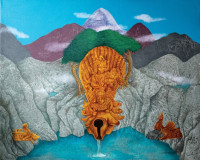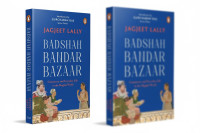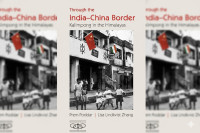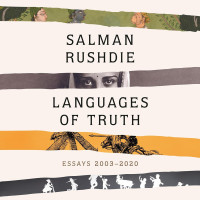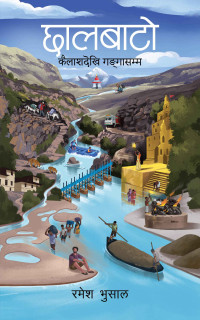Books
A firsthand account of a Nepali surveyor’s Everest summits
Khim Lal Gautam’s ‘Pandhraun Chuli’ is a much-needed addition to Nepal’s mountaineering literature.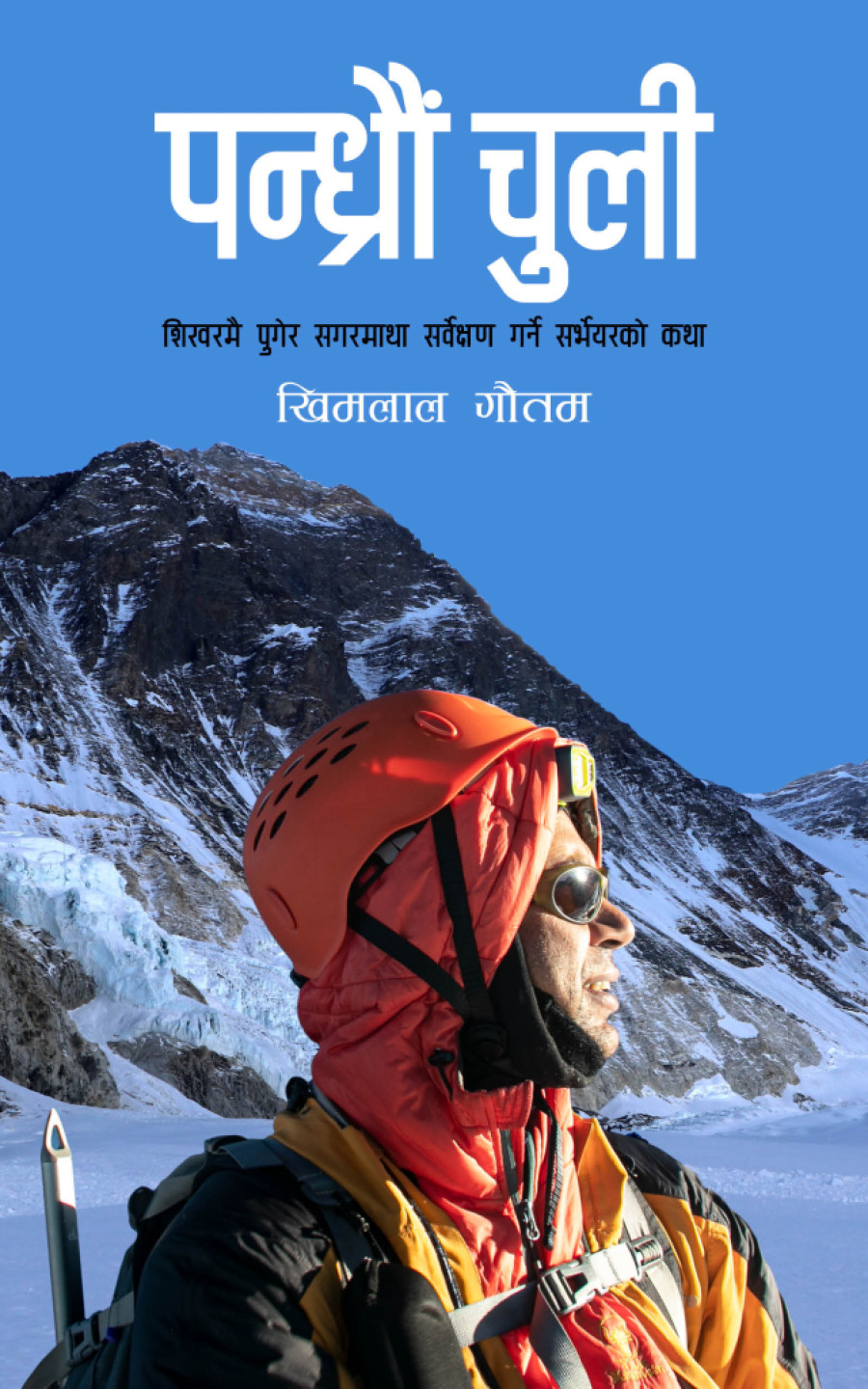
Anish Dahal
A dark cloud enveloped me. I am not sure if it is the weather or a hallucination. Altitude is a tricky place, was a common knowledge to me. I cannot exactly recall what went on in my head. Perhaps, it's the thin air that blurred out…all that was on my mind. I realized mindlessness could be a pleasure. What is this luxury? Why am I in a heavenly ecstasy here in the death zone? How is it possible that I can't recall anything, and that I'm not even trying? These questions remain unanswered to this day. The summit I had attained, the historical summit... did I reach the top? I couldn't remember. My home, family, my beloved, my status, prestige, wealth, everything vanished. The emptiness of my soul was gnawing at me. My legs collapsed before I could force myself to reclaim my human identity, and I vaguely recall tumbling towards the hard snow of South Col (p. 176).
This excerpt from Khim Lal Gautam’s recently released book, ‘Pandhraun Chuli’, is a surveyor's story of highs and lows with Everest and life afterwards.
Gautam is a blend of many qualities. A two-time Everest summiteer, an engineer working for the Survey Department of Nepal, an academician, and a very enthusiastic mountaineering and exploration historian. A rather spot-on title to introduce the author would be the man who led a survey team to the top of the world, scaling the peak of Mount Everest at 8848.86 meters above sea level.
Gautam, amalgamating his experiences of the climbs with Everest’s knowledge base, has come up with a 351-page book titled ‘Pandhraun Chuli’, (unofficial translation: Peak XV). The book takes readers on a mountaineering trip replete with Everest-related historical facts and events.
I recalled George Mallory and his love triangle while reading this book. When Mallory was home, all that occupied his head was Everest, and when he was in front of Everest, all he could think of was his wife, Ruth Mallory, and the children. Similarly, Gautam is seen in a love triangle that oscillates between Everest and his pregnant wife. The book is split into two main sections: a personal climbing journal of two Everest expeditions and a second that gives us an insight into the history of exploration, survey, and mountaineering on Everest.
In the first section, Gautam narrates his ascent to Everest. He, chronologically, tells tales of his involvement in the Everest team in 2011, proving himself as a civil servant who is not only a desk jockey but, in a down suit, an enduring climber.
The second section of the book exposes readers to a high level of emotional volatility. Having to leave a pregnant wife behind and heading to Everest without the cheerful consent of family is a hard decision, especially when one's body is past its physical prime and being given the expedition’s leadership to measure the height of the mountain for the first time by an all-Nepal surveyor team. Gautam tells his story in the form of a travelogue with many sentimental experiences. From embracing his fast-approaching fatherhood to almost dying at South Col, the ascent’s diary takes readers through many thoughtful questions. The book also calls into question the management style of the Nepali expedition organisers and serves as a chilling reminder of the prevalent discrimination against Nepali mountaineers.
An interesting and unique aspect of the book is the writer’s ability to find religious and spiritual connections in both geographical and climbing pursuits. He might be the only Everest summiteer to this day who decided the last push from South Col based on an astrological calendar over the weather forecast! The writer’s philosophical duel with an inanimate Everest and himself is a worthwhile read. He says in the book that the load a climber has in his backpack is not all that he carries. There are heavier things in pursuit of mountaineering. To the author, a promise of a safe return made to his wife and parents, a vow taken in the name of national pride, along with a desire to exhibit his leadership to the team, are heavier than physical loads. Philosophically, the author questions himself and Everest. Who is there behind the climber’s mask? What dreams does he have? What aspirations have made him climb? What is the degree of sacrifice he is prepared to make for the summit and return? The answers to these daunting questions surround the author’s climbs.
For a reader who’s new to the mountains and mountaineering, the book should be an enjoyable read as it details how everyday things unfold at Everest base camp and above. The book also indirectly warns Everest climbing aspirants about the prevailing waste on Everest, the ever-increasing human excreta there, environment degradation issues and expeditions’ contributions to them, and unclaimed dead bodies lying on the mountain.
The readers ultimately get the satisfaction that the team, at a great expense, accomplish their mission. A remarkable decision is taken by the author (as expedition leader) to begin their final push to the summit from the South Col, at mid-day. That is a highly risky move, leading climbers to extreme physical exhaustion while being tormented by ferocious winds and piercing cold. Climbers generally start their summit push at around 10-11am. The team safely reaches the summit, and the benefit of moving on mid-day gives them precious time in solitude to set up the GNSS device and collect data. If the team had reached the top at the same time as other climbers, they wouldn't have been able to get accurate data because of the crowd. They also wouldn't have been able to stop anyone for a "national pride project" as the summit of Everest is a moment for which climbers have had to spend thousands of dollars and years on training.
Gautam led the first successful Everest height re-measurement expedition, but his Everest expedition delight was obliterated by the tragedy of losing his one-year-old son owing to premature birth-led health complications. Fate intervened for a man who took fatherhood as his motivation for every step he took towards Everest and back. The book turns melancholic towards the end of section one.
The book's second section proves to be a wonderful treat for Everest fanatics and scholars. The readers get to understand in simple Nepali the tales of the geological evolution of Everest, to its naming, mountaineering ambitions of the British and expeditions since the first reconnaissance of 1921 to the first successful summit of 1953, followed by stories of survey and mapping. The book covers some issues generally not seen in other Everest accounts. Most intriguing for me was seeing a photograph of the famed Gurkha soldier Tejbir Budha, who took part in the 1922 expedition; a thorough investigation
of the Tenzing-Hillary debate on who reached the summit first; and a rooted analysis of the existence of Everest and its connection with Vedic texts, which, I believe, lays the foundation for an almost unprecedented set of studies. The latter part of the history section gets quite technical for someone who needs help understanding the science of mapping and surveying. Those don’t make much sense to a non-scientific reader.
The book, however, has some glitches. One noticeable error would be claiming Dr Alexander Kellas as someone inexperienced in high-altitude mountaineering (p 238). The reality is that Dr Kellas was one of the greatest mountaineers of his time, who climbed extensively in the Himalayas of the Indian state of Sikkim. The date formats in the book jump from Bikram Sambat to Gregorian back and forth, and erratically, thus confusing readers. The next edition could make the climbing experience richer with pictures of relevant geography. It would also be better to have photographs of the history section in the gallery.
To sum it all up, the book is a worthwhile read. The book’s language is lucid, and a rare Nepali publication that chronicles mountains and adventures so well. Youngsters can give it a read to understand what Everest is all about and get insights into mountaineers’ experiences during the ascent. I hope that the book comes out in English and in other international languages, too, soon.
————————————————————————————————————
Pandhraun Chuli
Author: Khim Lal Gautam
Publisher: FinePrint
Price: Rs525




 10.12°C Kathmandu
10.12°C Kathmandu
